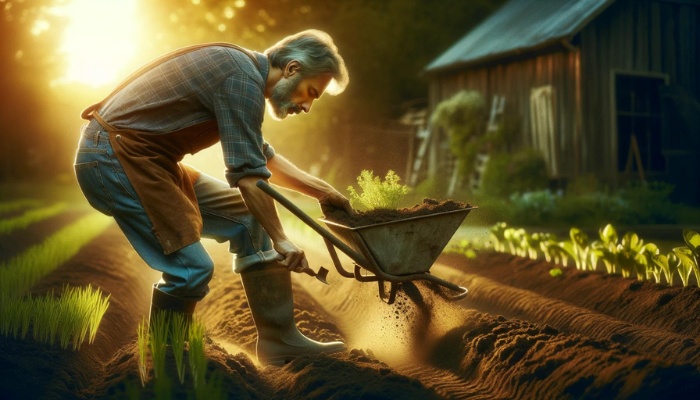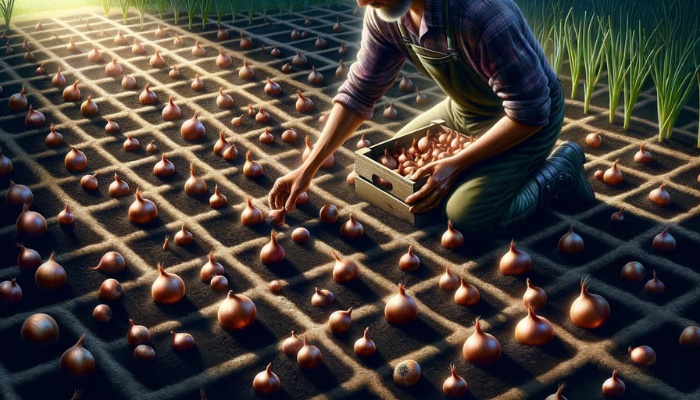Have you ever wondered if the compact nature of a square foot garden could truly support the growth of onions, a staple in cuisines worldwide? You’re not alone.
Growing onions in such a confined space requires specific know-how, from selecting the right variety to optimizing planting time and managing space efficiently.
You’ll find that with the right strategies, not only is it possible, but it can also be incredibly rewarding.
1. Selecting the Right Variety
Choosing the right variety of onion for your square foot garden is crucial for optimizing growth and yield.
When selecting onions, you’re faced with a spectrum of onion colors and flavor profiles, each suited to different culinary uses and garden conditions. To make an informed decision, you’ll need to consider both aspects.
Onion colors—ranging from white, yellow, to red—aren’t just aesthetic choices. They’re indicators of the onion’s flavor profile and storage lifespan.
- White onions, often milder, are perfect for raw applications, like salads and salsas.
- Yellow onions, with their balance of astringency and sweetness, are versatile kitchen staples, ideal for cooking.
- Red onions, known for their vibrant color and sharp flavor, add a punch to dishes both raw and grilled.
Understanding these nuances allows you to tailor your garden to your culinary preferences and storage needs.
Remember that the right variety ensures not only a bountiful harvest but also enhances your cooking with flavors that store-bought onions seldom match.
2. Optimal Planting Time
To optimize your onion crop’s growth and yield in a square foot garden, it’s important to plant at the most advantageous time, factoring in both your local climate and the specific onion variety’s growth cycle.
Climate considerations play a pivotal role in determining the optimal planting time. Onions require a cool to moderate climate to start off, with a gradual shift toward warmer temperatures as they mature.
Typically, planting is done in early spring for most regions. However, in areas with mild winters, planting can occur in fall, allowing onions to overwinter and mature by early summer.
Understanding the growth cycle of your chosen onion variety is equally important.
Short-day onions flourish when daylight lasts 10-12 hours, making them suitable for southern regions while long-day onions require 14-16 hours of daylight, thriving in northern areas.
Intermediate-day onions, adaptable to a broad range of climates, need 12-14 hours of daylight.
Incorporating moon phases into your planting schedule can also enhance growth. Planting just after the new moon, when the moon is waxing, can stimulate root development, ensuring a robust start for your onions.
Balancing these scientific and practical considerations ensures your onions receive the best start possible, setting the stage for a bountiful harvest.
3. Space Management Techniques
Maximizing your square foot garden’s space requires strategic planning and understanding of onion plants’ specific needs, including their root spread and foliage size.
Onions have a relatively small root system, but they need room to expand and access to ample sunlight. Finding a balance between sufficient room for growth and utilizing space efficiently is key.
Companion planting is another good strategy for space management. This practice involves growing plants together that benefit each other by deterring pests, enhancing growth, or improving flavor.
For onions, good companions include tomatoes, carrots, and strawberries. These combinations can help maximize the use of space while promoting a healthier garden.
For instance, planting onions around the perimeter of a square foot dedicated to tomatoes can protect the tomatoes from certain pests while efficiently utilizing every inch of soil.
4. Nutrient-Rich Soil Preparation

Ensuring your square foot garden has nutrient-rich soil is vital for the successful growth of onions as these plants thrive in environments abundant in organic matter and key minerals.
The foundation of a thriving garden begins with the soil. Here’s how you can prepare your soil to meet the exacting needs of your onion plants:
- Test Soil pH: Onions prefer a slightly acidic to neutral soil pH, ranging from 6.0 to 7.0. Testing your soil’s pH is the first step in understanding what amendments it may need. If your soil is too acidic, consider adding garden lime; if it’s too alkaline, sulfur can help adjust it.
- Incorporate Compost: Adding compost is non-negotiable. Rich in nutrients, compost not only feeds your onions but also improves soil structure and water retention. Aim to mix in a 2- to 3-inch layer of compost into the top 6 inches of soil.
- Ensure Balanced Nutrients: Onions require a balanced supply of nitrogen, phosphorus, and potassium. Use a balanced, slow-release fertilizer to provide a steady supply of these essential nutrients throughout the growing season.
5. Consistent Watering Strategies
After preparing your soil with the right nutrients, it’s vital to focus on maintaining consistent moisture levels as onions require a steady supply of water to develop fully.
Achieving this can be challenging, especially in varying climates, but don’t worry; with the right watering tools and strategies, you can ensure your onions thrive.
First, integrate a drip irrigation system into your square foot garden. This system delivers water directly to the roots, minimizing evaporation and ensuring each onion receives an equal amount of water.
It’s a practical solution that conserves water while promoting healthy growth.
Additionally, mulching around your onions can enhance drought resilience. By applying a layer of organic mulch, you not only retain soil moisture but also regulate soil temperature, providing a stable environment for your onions to grow.
This method reduces the frequency of watering, making your garden more sustainable.
6. Combating Pests and Diseases
Once you’ve established a consistent watering regime, turn your attention to the next major challenge: safeguarding your onions from pests and diseases.
Pests and diseases can decimate your crop, leaving you disheartened after all your hard work. Fortunately, there are effective, science-backed methods to protect your onions, ensuring a healthy, robust harvest.
- Embrace Organic Repellents: Natural deterrents such as neem oil or garlic spray can ward off common pests like onion thrips or aphids without harming your garden’s ecosystem. Regular application following the product’s guidelines is vital for effectiveness.
- Introduce Beneficial Insects: Beneficial insects, such as ladybugs and lacewings, are nature’s pest control agents. They prey on harmful pests, maintaining a balanced ecosystem. You can attract these helpers by planting companion flowers or purchasing them from reputable sources.
- Monitor and Act Promptly: Regularly inspect your onions for signs of disease or pest infestation. Early detection is key. If you spot trouble, remove affected plants to prevent spread, and apply suitable organic treatments.
7. Harvesting and Storage Tips
First, you’ll need to identify the right time for harvesting. When the onion tops begin to fall over and yellow, it’s a sign they’re ready. Gently lift the onions from the soil using a fork, being careful not to damage the bulbs.
Next comes the critical step of curing your onions, a process that enhances their storage life. Lay them out in a well-ventilated, dry area, away from direct sunlight.
This stage can last from two to three weeks, during which the outer layers dry out, forming a protective barrier. It’s this meticulous curing method that prepares onions for long-term storage.
Storage conditions are equally important. Store your cured onions in a cool, dark place with good air circulation. Mesh bags or netted baskets are ideal as they allow air to circulate around each onion, preventing moisture accumulation and rot.
Keeping onions at a consistent temperature of 40-50°F (4-10°C) will significantly extend their shelf life, ensuring you have a supply of onions for months to come.

